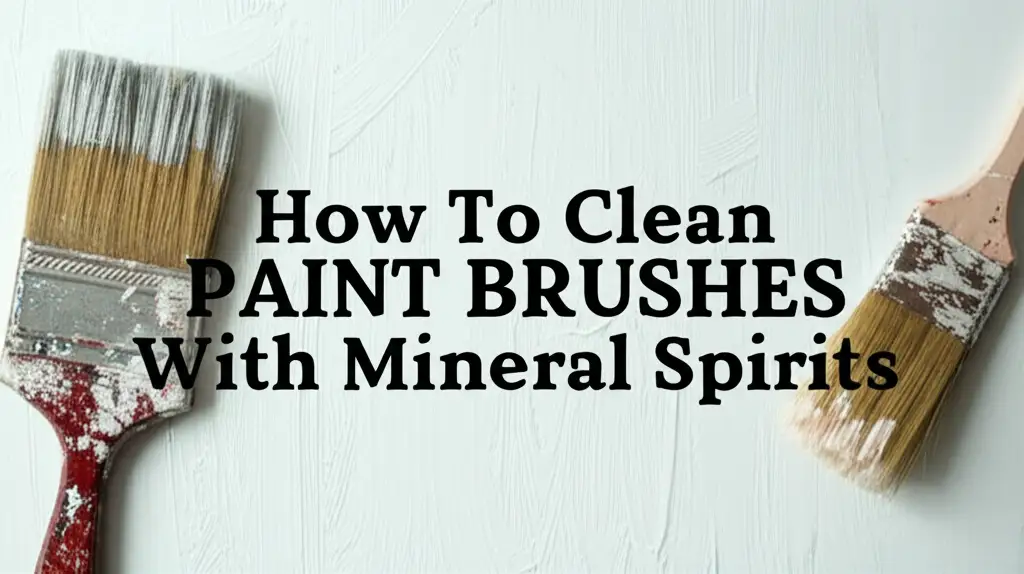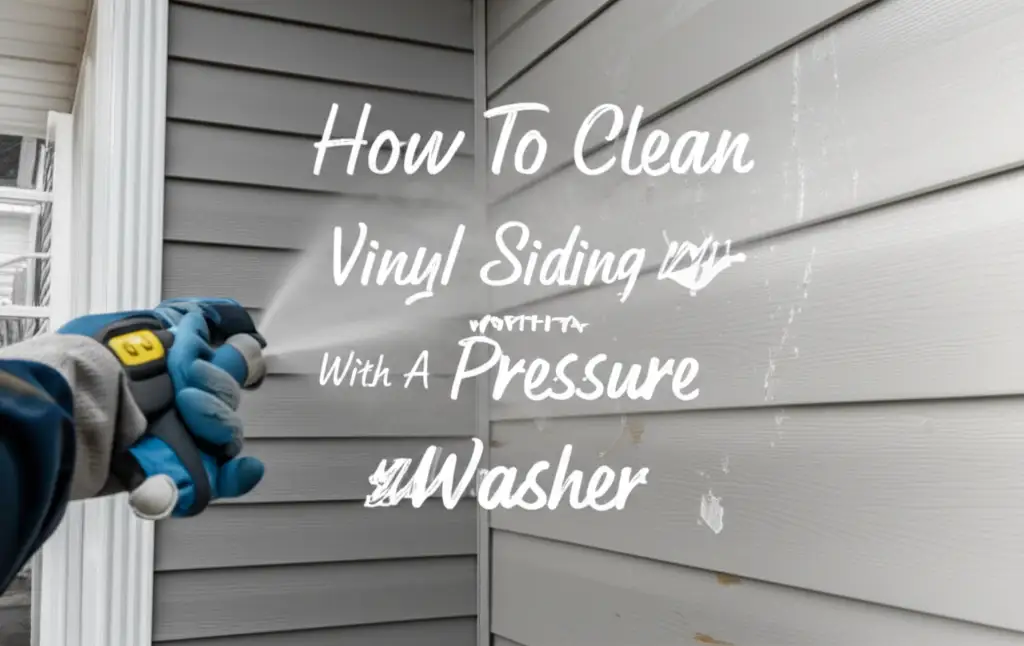· Home Maintenance · 11 min read
How To Clean Paint Brushes With Mineral Spirits

Restore Your Brushes: How to Clean Paint Brushes with Mineral Spirits
You just finished a painting project. Your paint brushes are coated with paint. Cleaning these tools properly is essential for their long life. This guide will show you how to clean paint brushes with mineral spirits. Mineral spirits are excellent for removing oil-based paints and stains.
This article covers why mineral spirits work well. I will list the tools you need for the job. You will learn the exact steps to clean your brushes. We will also discuss safety and proper disposal methods. Keeping your brushes in good shape saves you money and makes future projects easier. Let us get your brushes perfectly clean.
Takeaway
- Mineral spirits effectively clean oil-based paints and stains from brushes.
- Gather safety gear, containers, and paper towels before starting.
- Remove excess paint first by scraping or wiping.
- Soak brushes in mineral spirits, agitate, and repeat until clean.
- Rinse brushes with warm, soapy water after solvent cleaning.
- Properly dispose of used mineral spirits and paint residue.
- Store clean brushes flat or hanging to maintain their shape.
Cleaning paint brushes with mineral spirits removes oil-based paints, varnishes, and stains effectively. You simply soak, agitate, and rinse the brushes in a designated container of mineral spirits until the paint dissolves. This process restores bristles to their original softness, preparing them for future use. Always wear protective gear and dispose of the solvent responsibly.
Why Mineral Spirits Work for Brush Cleaning
Mineral spirits are a powerful solvent. They dissolve oil-based paints, varnishes, and stains. This makes them ideal for cleaning brushes used with these materials. Water alone cannot break down oil-based products.
Mineral spirits evaporate slower than paint thinner. This allows more working time to clean your brushes. They also leave less residue. Using mineral spirits helps keep your brushes soft and flexible. This extends the life of your painting tools.
Oil-based paints contain resins and oils that adhere strongly to brush bristles. Mineral spirits break down these components. They penetrate deep into the brush. This ensures all paint is loosened and removed. You will find your brushes feel like new after a proper cleaning.
Gathering Your Cleaning Essentials
Before you begin cleaning your paint brushes, gather all necessary items. Having everything ready makes the process smoother and safer. You need a few specific tools to do the job right. I always make a checklist before I start.
First, you need fresh mineral spirits. Buy a good quality product from a hardware store. Next, get a few old containers. Metal coffee cans or glass jars with lids work well. Label them clearly, like “Dirty Spirits” and “Clean Spirits.”
You also need personal protective equipment. Wear chemical-resistant gloves to protect your skin. Safety glasses are important to shield your eyes from splashes. Have plenty of old rags or paper towels on hand. A brush comb is useful for separating bristles.
- Mineral Spirits: Choose a reputable brand.
- Two Containers with Lids: Use metal or glass. Label one for dirty spirits and one for cleaner spirits.
- Gloves: Chemical-resistant gloves are a must.
- Safety Glasses: Protect your eyes from splashes.
- Old Rags or Paper Towels: For wiping off excess paint and spirits.
- Brush Comb: Helps remove stubborn paint from bristles.
- Warm, Soapy Water: A bucket or sink for final rinsing.
- Brush Spinner (Optional): Helps dry brushes faster.
Having these items ready prevents interruptions. It also helps you stay safe throughout the cleaning process. This preparation step is key for efficient cleaning.
Preparing Your Brushes for Cleaning
Starting the cleaning process correctly saves a lot of effort. The first step is to remove as much paint as possible before using mineral spirits. This reduces the amount of solvent you need and makes the job cleaner. I always do this initial scrape.
Use the edge of a sturdy piece of cardboard or a putty knife. Scrape off excess paint from the bristles. Work from the ferrule (the metal band) towards the tip. Gently squeeze the bristles to push paint out. Do this over newspaper or a waste container.
After scraping, wipe the brush thoroughly with an old rag or paper towel. This removes even more paint. Get as much off as you can. This pre-cleaning step helps preserve your mineral spirits. It also makes the deep cleaning much more effective.
For brushes used with stain, some people look for alternatives to harsh chemicals. If you are cleaning brushes that have had stain on them and you wish to avoid mineral spirits for the initial cleaning, you might find some useful tips in resources about how to clean stain off brush without mineral spirits. However, for a truly thorough cleaning of oil-based products, mineral spirits are generally the most effective. This preparation minimizes the amount of chemical solvent needed.
The Step-by-Step Mineral Spirits Cleaning Process
Now we are ready for the main cleaning. Follow these steps carefully to ensure your brushes get spotless. This is where the mineral spirits do their heavy lifting. Take your time with each brush.
Step 1: Initial Soak in Dirty Spirits
Pour a small amount of “dirty” mineral spirits into one of your containers. This container will collect most of the paint residue. Dip your brush into the spirits, making sure the bristles are fully submerged. Swirl the brush around gently for a minute or two.
Press the brush against the bottom and sides of the container. This helps force paint out from deep within the bristles. You will see the spirits change color as paint dissolves into them. This initial soak removes the bulk of the remaining paint.
Step 2: Comb and Agitate
Remove the brush from the dirty spirits. Use a brush comb to gently work through the bristles. Start from the ferrule and comb towards the tip. This pulls out any stubborn paint particles. Repeat this process, re-dipping the brush in the dirty spirits as needed.
Agitate the brush against the container walls or a screen if you have one. This helps break up the paint. Continue until most of the visible paint is gone. The spirits will look very cloudy and colored.
Step 3: Rinse in Cleaner Spirits
Move to your “clean” mineral spirits container. Pour a fresh, small amount of spirits into this second container. Dip your brush into these clean spirits. Swirl and agitate again.
You should see much less paint coming off this time. This step helps to rinse away any lingering residue. Repeat this step with fresh spirits if your brush still releases a lot of color. The goal is for the spirits to remain relatively clear after cleaning.
Step 4: Final Wipe
Once the brush seems clean in the fresh mineral spirits, remove it. Use a clean, dry rag or paper towel. Wipe the bristles thoroughly. Squeeze the bristles gently to remove as much solvent as possible.
Ensure no paint residue remains. Check near the ferrule, as paint often collects there. The bristles should feel soft and separated. This final wipe prepares the brush for the water rinse.
Rinsing and Conditioning Brushes After Mineral Spirits
After cleaning with mineral spirits, your brushes need a final wash. This step removes any remaining solvent and conditions the bristles. It makes the brushes soft and ready for future use. Do not skip this crucial part.
First, rinse the brush under warm running water. Use a mild soap, like dish soap or a specialized brush cleaner. Lather the bristles gently. Work the soap into the brush, ensuring it reaches all parts of the bristles.
Rinse the brush again thoroughly under warm water. Continue rinsing until no suds or paint residue appear. The water should run clear. You might notice the bristles feeling smoother and cleaner.
Once rinsed, gently reshape the brush head with your fingers. Remove excess water by gently squeezing the bristles. You can also use a brush spinner if you have one. This helps extract more water and speeds drying. This final step ensures your brushes are truly clean.
Safety and Disposal Guidelines
Working with mineral spirits requires careful attention to safety. Proper ventilation and personal protection are key. Disposal of used spirits is also very important. I always prioritize safety during this process.
Work in a well-ventilated area. Open windows and doors. Using a fan can also help. Mineral spirits emit fumes that can be harmful if inhaled. Avoid working in enclosed spaces.
Wear your chemical-resistant gloves and safety glasses at all times. Protect your skin and eyes from splashes. Mineral spirits can irritate skin and eyes upon contact. Keep the spirits away from open flames or sparks. They are flammable.
Do not pour used mineral spirits down the drain. This pollutes water systems. Instead, let the paint solids settle in your “dirty” spirits container. This may take several hours or even days. Once the paint settles, carefully pour the cleaner spirits from the top into a storage container. This reclaimed spirit can be reused for initial cleaning.
The sludge at the bottom and any heavily contaminated spirits should be disposed of properly. Contact your local waste management facility. Ask about hazardous waste collection days or drop-off locations. Many communities have specific rules for paint and solvent disposal. Properly disposing of these materials protects the environment and your community.
Maintaining Brush Quality and Longevity
Proper care extends the life of your paint brushes. After cleaning with mineral spirits, store them correctly. This helps them retain their shape and effectiveness. I make sure my brushes are stored well.
After rinsing and reshaping, allow your brushes to dry completely. Hang them bristles-down, if possible. This prevents water from seeping into the ferrule, which can weaken the glue. If you cannot hang them, lay them flat on a clean surface. Do not store brushes standing on their bristles. This can bend and damage them.
Once dry, store brushes in a way that protects their bristles. Brush wraps or cases work well. You can also store them in a drawer. Ensure no heavy objects rest on the bristles. Keeping them protected prevents damage.
Periodically inspect your brushes for any remaining paint or damage. A well-maintained brush performs better. It also makes future cleaning easier. Investing a little time in brush care saves money in the long run. Good brush maintenance ensures your tools are always ready for your next project.
FAQ Section
Can I reuse mineral spirits for cleaning brushes?
Yes, you can reuse mineral spirits. Let used spirits sit undisturbed in a sealed container for a few days. The paint solids will settle to the bottom. Carefully pour the clear liquid from the top into a clean container. You can use this reclaimed spirit for initial brush cleaning.
What kind of paint can be cleaned with mineral spirits?
Mineral spirits are effective for cleaning brushes used with oil-based paints, varnishes, and stains. They are not suitable for water-based (latex) paints. For latex paints, simply use warm water and soap. Always check the paint type before cleaning.
Are mineral spirits dangerous to use?
Yes, mineral spirits can be dangerous if not handled correctly. They are flammable and their fumes can be harmful. Always use them in a well-ventilated area. Wear protective gloves and eye protection. Keep them away from heat sources and open flames.
How do I dispose of used mineral spirits safely?
Do not pour used mineral spirits down drains. Allow paint solids to settle, then pour the clear liquid into a separate container for reuse. Dispose of the remaining sludge and heavily contaminated spirits at a local hazardous waste collection site. Contact your local waste management for specific guidelines.
How long does it take for paint brushes to dry after cleaning?
Drying time depends on humidity and air circulation. After cleaning with mineral spirits and then washing with soap and water, brushes typically take several hours to a full day to dry completely. Hanging them bristles-down or laying them flat helps speed the process. Ensure they are fully dry before storing.
Can mineral spirits damage certain types of brushes?
Mineral spirits are generally safe for brushes with natural bristles, which are commonly used for oil-based paints. They can be used on synthetic bristles as well, but always perform a small test first. Ensure the brushes are designed for oil-based paints to begin with.
Conclusion
Cleaning your paint brushes with mineral spirits is a vital step for any painter. It ensures your tools remain in excellent condition. This process extends their lifespan and keeps them performing like new. We covered everything from preparation to proper disposal.
Remember to gather your safety gear first. Remove excess paint before soaking. Use a two-container system for mineral spirits to maximize their use. Always finish with a thorough soap and water rinse. Proper storage after cleaning also plays a big role. By following these steps, you will keep your paint brushes ready for many projects to come. Keep your tools clean, and they will serve you well.
- paint brush cleaning
- mineral spirits
- brush care




